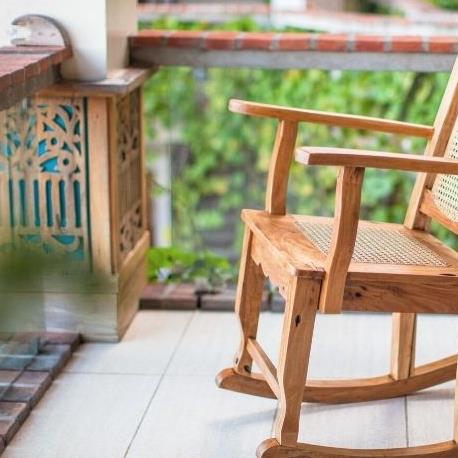Imagine a beautiful summer morning with the dew still wet on the grass, the birds singing, and the sun just peeking over the horizon. These mornings are made for rocking chairs. The rocking chair is as American of a piece of furniture as there will ever be. Granted, there have been similar pieces of furniture throughout the ages, but there’s nothing exactly like it. Sit back, relax, and enjoy reading about the history of the rocking chair.
Sleeping Babies Give Rise
The primary ancestor of the modern rocking chair is the bassinet or cradle. Dating back to 1000 A.D., there are writings and pictures of babies lying in cradles with rockers on them being soothed by the gentle rocking motion. Mothers back then, as today, would do anything to quiet a restless baby and put them to sleep. They soon realized that standing, holding the baby, and swaying back and forth for hours on end isn’t feasible. It would take several centuries before it dawned on anyone to add rockers to a chair for adults to sit on. The exact time and place of the invention of the rocking chair aren’t known, but it’s credited to one major American historical figure.
It’s All About the Benjamins
America’s favorite uncle, inventor, and rotund writer, Benjamin Franklin, is the inventor of the rocking chair. In 1710, Ben Franklin invented the rocking chair and forever changed how people lounged and relaxed. Not only did he invent the rocking chair, but he also invented a mechanism that foot-powered a fan. As the chair rocked, a foot pedal made an overhead palmetto fan rotate and create a breeze. Even with Franklin’s clever fan, the act of rocking itself created a breeze. Most chairs were set outdoors under a shade tree during hot summer days.
Early Uses for Rocking Chairs
The history of the rocking chair is based on functionality and practicality. In Colonial America, settlers didn’t use chairs and furniture like we do today. Benches, stools, and flat-topped chests were more common. Armchairs or stools with backs were only used by the head of the household in wealthier homes. By the late 1700s, the chair became more common in middle-class homes. Most early rocking chairs were normal wooden chairs with rockers added to the feet. Armless rocking chairs were called sewing rockers. They were lower to the ground and easier for women to get in and out of, and the lack of arms also made it easier to sew while sitting in them. Mothers knew the benefits of the rocking chair, as they used them to soothe fussy babies back to sleep.
Are You a Professional?
Requests for your services are coming in left and right. Let’s connect and grow your business, together.


